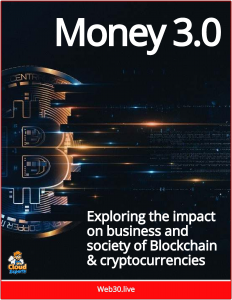 The cryptocurrency market has been a rollercoaster of hype, hope, and heartbreak.
The cryptocurrency market has been a rollercoaster of hype, hope, and heartbreak.
From Bitcoin’s meteoric rise to the speculative frenzy of 2021, followed by dramatic crashes, the question looms: is crypto a revolutionary technology destined to reshape finance, or just another bubble waiting to burst?
The truth lies beyond the noise—past the memes, the moon emojis, and the doomsday predictions. To understand the future of cryptocurrency, we must look at its technological promise, its societal impact, and the challenges it faces in a world sceptical of its staying power.
The Promise: A Decentralized Dream
At its core, cryptocurrency is more than digital money—it’s a radical reimagining of trust. Blockchain, the technology underpinning most cryptocurrencies, offers a decentralized ledger that eliminates the need for middlemen like banks or governments.
This is no small feat. In a world where centralized institutions have long dictated financial flows, crypto proposes a system where individuals hold the reins. Bitcoin, launched in 2009, was the first to prove this concept, enabling peer-to-peer transactions without a central authority. Ethereum took it further, introducing smart contracts—self-executing agreements that could automate everything from insurance payouts to supply chain logistics.
The potential is staggering. In developing nations, where banking infrastructure is sparse, cryptocurrencies could provide financial access to billions. Imagine a farmer in rural Africa receiving instant payments for crops via a blockchain-based stablecoin, bypassing predatory fees. Or consider decentralized finance (DeFi), which offers lending, borrowing, and investing without traditional gatekeepers. In 2024, DeFi platforms managed over $100 billion in total value locked, a testament to their growing traction. Crypto also promises to empower creators through non-fungible tokens (NFTs), enabling artists to monetize digital works in ways previously unimaginable.
Yet, the dream isn’t flawless. The same decentralization that empowers users also creates vulnerabilities. Without centralized oversight, fraud, scams, and market manipulation thrive. The collapse of platforms like FTX in 2022 exposed how unchecked ambition can erode trust. The future of crypto hinges on whether it can deliver on its promise while mitigating its risks.
The Reality: Volatility and Skepticism
Cryptocurrency’s journey has been anything but smooth. Bitcoin’s price swings—peaking at nearly $69,000 in 2021, crashing to $16,000 by 2022, and rebounding to around $60,000 in 2025—reflect a market driven more by sentiment than fundamentals.
Speculation fuels bubbles, and bubbles fuel skepticism. Critics argue crypto is a solution in search of a problem, pointing to its use in illicit activities (though studies estimate only 1-2% of transactions are illegal) and its environmental toll. Bitcoin mining, for instance, consumes more energy annually than some small countries, though innovations like Ethereum’s shift to proof-of-stake have slashed energy use by over 99%.
Regulation is another hurdle. Governments worldwide are grappling with how to classify and control crypto. The U.S. has taken a fragmented approach, with the SEC and CFTC clashing over jurisdiction, while countries like El Salvador have embraced Bitcoin as legal tender. Harsh crackdowns, like China’s 2021 crypto ban, contrast with progressive frameworks in places like Switzerland. The lack of global consensus creates uncertainty, stifling institutional adoption. If crypto is to go mainstream, it must navigate this regulatory minefield without losing its decentralized ethos.
Then there’s the user experience. Crypto wallets, private keys, and gas fees are daunting for the average person. Mass adoption requires interfaces as intuitive as Venmo or PayPal. Projects like Solana and Layer-2 solutions on Ethereum are tackling scalability and cost, but the learning curve remains steep. The future depends on making crypto accessible without compromising its core principles.
The Horizon: Evolution or Extinction?
So, where does cryptocurrency go from here? Three scenarios emerge.
Mainstream Integration: Crypto could become a cornerstone of global finance, integrated into everyday transactions. Stablecoins like USDC, pegged to fiat currencies, are already used for cross-border payments by companies like Visa. Central bank digital currencies (CBDCs), like China’s digital yuan, might coexist with decentralized coins, blending state control with blockchain’s efficiency. In this scenario, crypto evolves into a hybrid system—part rebellion, part establishment.
Niche Resilience: Crypto might not dominate but could thrive in specific use cases. DeFi could serve underbanked populations, while NFTs and tokenized assets redefine ownership in gaming, real estate, and art. Bitcoin might persist as “digital gold,” a hedge against inflation, especially as global debt nears $350 trillion. This path sees crypto as a specialized tool, not a universal one.
Collapse and Rebirth: If regulation stifles innovation or another major scandal erodes trust, crypto could face a reckoning. But even in collapse, the underlying technology—blockchain—would likely endure, repurposed for supply chains, voting systems, or data security. The spirit of decentralization would outlive any single coin.
The Big Questions
The future of cryptocurrency hinges on tough questions. Can it scale without sacrificing security? Can it balance privacy with accountability? Will governments embrace it or smother it? And perhaps most critically: can it deliver real-world value beyond speculation?
The answers depend on the community—developers, investors, and users—who must navigate hype cycles and build something enduring. Crypto’s detractors see a bubble; its evangelists see a revolution. The truth is likely somewhere in between. Blockchain’s potential to decentralize trust is undeniable, but its path forward requires pragmatism over dogma.
The bubble may burst again, but what emerges from the wreckage could redefine how we interact with money, power, and each other. The future of cryptocurrency isn’t about predicting the next bull run—it’s about whether we can harness its ideas to build a system that’s fairer, freer, and more resilient than what came before.



